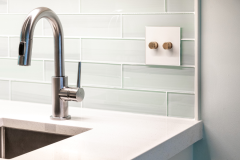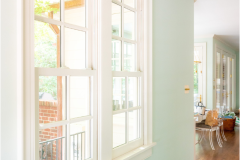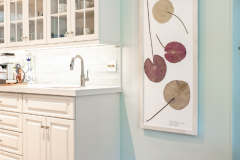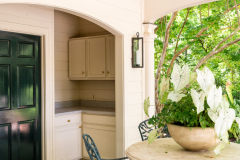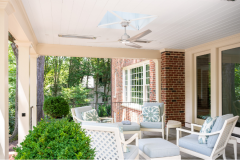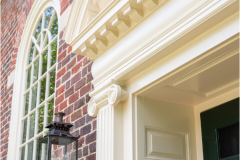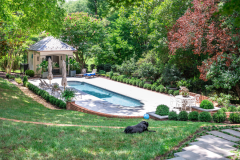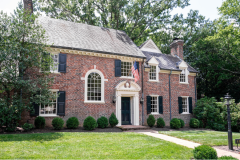
by HJ HOLTZ | Sep 12, 2022 | Preparation Process
Scheduling and executing projects for H.J. Holtz & Son is a multi-step process that involves many people and, often, many changes.
“There are so many factors [at play],” says Production Manager Kelly Kutchey. “People get sick – both customers and staff – and weather can affect outdoor projects. We have spreadsheets for all our jobs, because everything relates; when something happens to delay one job, that affects others.
Because of increased demand for painting and wallpapering services, wait times for jobs to begin have lengthened. Currently, interior paint jobs are being scheduled for late November, and exterior paint jobs – where weather prevents most work through the winter – are booked through the end of this year. For wallpaper jobs, the wait time is approximately 6 months.
Sometimes, as a project is underway, problems will arise – such as unexpected wood damage that needs to be repaired before painting can continue. Projects are scheduled to allow for small extensions, but larger changes – such as adding to an order – are harder to manage. Kutchey notes that once customers see the improvement in one area, they often want to paint another area, so it doesn’t look dull by comparison.
“A lot of times, we’re hired just to paint walls and the ceiling, but then the client wants to add trim, which can take days,” he says. “And if we’re painting the first floor, a lot of people want to add the stairwell. We can’t do that, because it pushes other jobs off schedule.”
The best way to avoid that situation, Kutchey says, is to have a thorough conversation with the estimator, to ensure the project includes every possibility. “We might be able to add a door or a closet to a project and stay on schedule,” he says, “but to redo an entire room really takes a week.”
H.J. Holtz & Son President Rick Holtz says the company prioritizes returning customers over new clients, but recommends that people think about what might be on the horizon.
“If you know your house is going to be on the Historic Garden Week tour, or there’s a party for graduation or a baptism, it’s best to plan ahead,” he says. “Our relationships are important. We are loyal to people who have been with us through thick and thin. We’re going to do everything we can to continue to be your paint and wallpaper contractor.”
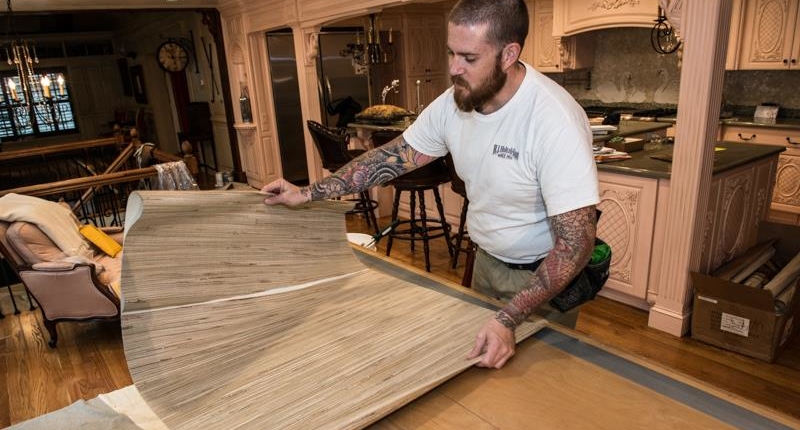
by HJ HOLTZ | Jan 4, 2022 | Preparation Process
The old adage about how a little effort at the start of a project can prevent problems down the line holds true, when it comes to painting and wallpapering your home.
H.J. Holtz & Son Production Manager Kelly Kutchey says the preparation process that goes into every job is designed to create a seamless execution and a happy outcome for everyone –especially the client.
“We know that when we take good care from the very beginning, we’re less likely to have to fix problems at the end,” Kutchey says. “Our team is trained well, so they know what to look for and how to manage whatever they find.”
Attention to detail is crucial in painting and wallpapering, Kutchey notes. At the beginning of interior projects, the manager in charge first determines which furniture has to be moved – to the center of a room for wall work, or out of the room if the ceiling is the project. “If we have enough room, we’ll move everything to the center and then drape with clear plastic, so we can see what’s underneath,” Kutchey says. “[Clear plastic draping] helps us know what we can and can’t lean on, and everything is protected.”
The next step in the preparation process is a thorough visual inspection. “We’re looking for stress cracks, holes, dents, scratches, anything that needs to be fixed,” Kutchey says. Drywall compound is used on walls, while wood filler resolves nicks and dings in trim. A smooth surface is essential for the finished look. “A fresh coat of paint will amplify any issue that’s going on, especially in trim work, because of the gloss paint typically used on trim,” Kutchey says.
Homeowners might think wallpaper in particular will cover surface issues, but the reverse is true. “Some papers are more forgiving, but most wallpapers are thin and will show bumps or indents in the surface,” Kutchey says.
When it comes to readying walls for hanging paper, the preparation process is the same as for painting, but additional preparation is needed “We always use wallpaper sizing – a clear primer – to create a slightly slick surface,” Kutchey says. “That way, the paper can be moved around a little as it’s applied and it’s easier to take it down later.
Latex glue is now used to attach paper to walls, which is far easier to dissolve than the resin-based paste of days gone by. For some projects involving hand-painted and high-end papers, the Holtz team may apply a layer of liner paper underneath the top layer, to protect the finished product.
When it comes to exterior painting, sanding and scraping thoroughly at the start of a project is a must. “The new paint won’t adhere properly if the foundation is loose,” Kutchey says.
Preparation work might add a little time to the full project, but it’s worth it in the end, Kutchey says. “Painting and wallpapering your home is an investment, and you want it done properly,” he says. “We have an experienced team, and we want to make sure we get it right from the start.”


